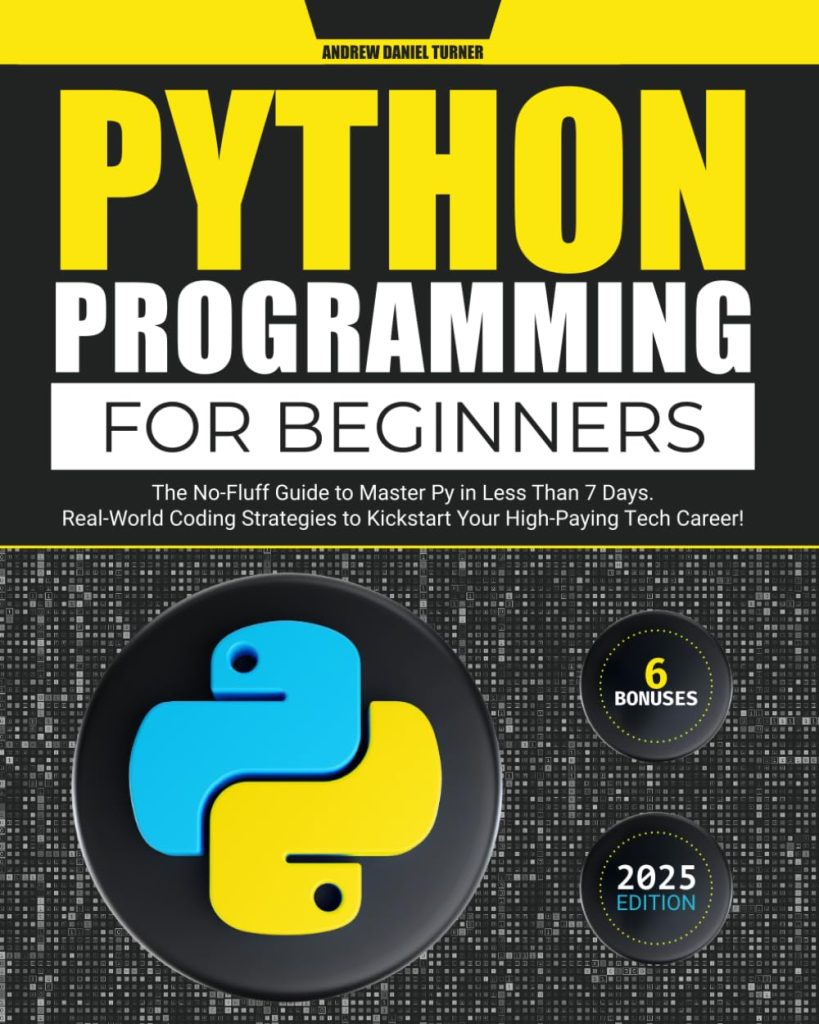
The datetime.timezone class in Python is an important component for managing timezone information effectively. Introduced in Python 3.2, this class provides a way to create fixed offset timezones, allowing developers to work with dates and times in a way that respects geographical differences in time.
At its core, the datetime.timezone class is designed to represent a timezone with a specific offset from UTC. This is accomplished by providing an offset value in minutes, which can be positive or negative, depending on whether the timezone is ahead of or behind UTC.
To create a timezone object, you can use the datetime.timezone constructor, passing a timedelta object that specifies the desired offset. Here’s an example:
from datetime import datetime, timezone, timedelta # Create a timezone for UTC+5 utc_plus_5 = timezone(timedelta(hours=5)) # Create a timezone-aware datetime object dt = datetime(2023, 10, 1, 12, 0, tzinfo=utc_plus_5) print(dt) # Output: 2023-10-01 12:00:00+05:00
The resulting datetime object, as shown in the example, carries the timezone information alongside the date and time. This feature is particularly beneficial for applications that require precise scheduling or logging across different geographical regions.
One of the key advantages of using datetime.timezone is its simplicity. Unlike some other libraries, it avoids the complexities of managing multiple timezones and the intricacies of daylight saving changes. However, it’s essential to note that datetime.timezone does not handle these changes automatically; it merely provides a fixed offset.
To further illustrate the utility of the datetime.timezone class, think the following example where we convert a naive datetime object (one without timezone information) into a timezone-aware one:
# Create a naive datetime object naive_dt = datetime(2023, 10, 1, 12, 0) # Localize the naive datetime to UTC+5 aware_dt = naive_dt.replace(tzinfo=utc_plus_5) print(aware_dt) # Output: 2023-10-01 12:00:00+05:00
In this example, we take a naive datetime and assign it a timezone using the replace method. The result is a timezone-aware datetime that accurately represents the intended moment in time, including the specified offset.
As you delve deeper into the datetime.timezone class, you’ll discover its potential for creating robust applications that handle various timezone-related functionalities without the confusion that often accompanies timezone management.
Creating and Using Timezone-Aware datetime Objects
Once you’ve created timezone-aware datetime objects, you’ll find that they can be seamlessly integrated into various applications, particularly those that require interactions across different geographic locations or time zones. The datetime.timezone class allows you to perform operations with these objects while maintaining their timezone context.
Here’s a practical example that demonstrates how to create multiple timezone-aware datetime objects and perform arithmetic on them:
from datetime import datetime, timezone, timedelta
# Create timezones for UTC+5 and UTC-3
utc_plus_5 = timezone(timedelta(hours=5))
utc_minus_3 = timezone(timedelta(hours=-3))
# Create timezone-aware datetime objects
dt_utc_plus_5 = datetime(2023, 10, 1, 12, 0, tzinfo=utc_plus_5)
dt_utc_minus_3 = datetime(2023, 10, 1, 12, 0, tzinfo=utc_minus_3)
# Perform arithmetic
time_difference = dt_utc_plus_5 - dt_utc_minus_3
print("Time difference:", time_difference) # Output: Time difference: 8:00:00
In this example, we create two timezone-aware datetime objects for UTC+5 and UTC-3. When we subtract one from the other, Python automatically calculates the time difference, yielding a timedelta object that represents the gap between the two time zones. This is immensely useful when you need to understand how time varies across regions.
Moreover, creating timezone-aware datetime objects can be particularly handy when you are dealing with user inputs. For instance, if a user provides a local time and you know their timezone, you can easily convert that input into a standardized format:
# User input: Local time in UTC-3
user_local_time = datetime(2023, 10, 1, 12, 0, tzinfo=utc_minus_3)
# Convert to UTC
utc_time = user_local_time.astimezone(timezone.utc)
print("UTC Time:", utc_time) # Output: UTC Time: 2023-10-01 15:00:00+00:00
In this snippet, we take a user-provided local time and convert it to UTC using the astimezone method. This illustrates how easily we can manipulate timezone-aware datetime objects to align with global standards.
Ultimately, the datetime.timezone class provides a simpler yet powerful mechanism for managing timezone-aware datetime objects. Understanding how to create, manipulate, and convert these objects is vital for any developer aiming to create applications that require accurate timekeeping across different locales.
Converting Between Timezones
Converting between timezones in Python is a vital skill for any developer working with datetime objects, especially when dealing with applications that span multiple geographical locations. The simplest way to handle timezone conversion is through the `astimezone` method, which allows for the transformation of a timezone-aware datetime object into another timezone. This method is intuitive and leverages the timezone information already embedded in the datetime object.
To illustrate this, let’s consider an example where we need to convert a datetime from one timezone to another. We will take a datetime object representing a moment in time in UTC+5 and convert it to UTC-3:
from datetime import datetime, timezone, timedelta
# Create timezones for UTC+5 and UTC-3
utc_plus_5 = timezone(timedelta(hours=5))
utc_minus_3 = timezone(timedelta(hours=-3))
# Create a timezone-aware datetime object for UTC+5
dt_utc_plus_5 = datetime(2023, 10, 1, 12, 0, tzinfo=utc_plus_5)
# Convert the datetime to UTC-3
dt_utc_minus_3 = dt_utc_plus_5.astimezone(utc_minus_3)
print("Converted Time (UTC-3):", dt_utc_minus_3) # Output: Converted Time (UTC-3): 2023-10-01 04:00:00-03:00
In this example, we first create a timezone-aware datetime object for UTC+5. Using the `astimezone` method, we convert this datetime to UTC-3. The output clearly indicates the new time, adjusted for the new timezone. That’s a powerful feature of the `datetime` module, allowing developers to easily navigate between timezones without manually calculating offsets.
When working with multiple timezones, especially in applications that involve scheduling events or logging activities across different regions, it’s crucial to maintain clarity in your datetime conversions. Miscalculations can lead to incorrect data being processed, which can have significant implications depending on the application’s context.
Python also provides a convenient way to convert naive datetime objects (those without timezone information) into timezone-aware objects before performing conversions. Here is how you can accomplish this:
# Create a naive datetime object
naive_dt = datetime(2023, 10, 1, 12, 0)
# Localize the naive datetime to UTC+5
aware_dt = naive_dt.replace(tzinfo=utc_plus_5)
# Now convert to UTC-3
converted_dt = aware_dt.astimezone(utc_minus_3)
print("Converted Time from Naive (UTC-3):", converted_dt) # Output: Converted Time from Naive (UTC-3): 2023-10-01 04:00:00-03:00
In this case, we first convert a naive datetime to a timezone-aware one using the `replace` method. Then we carry out the timezone conversion using `astimezone` once again. The ability to convert naive datetime objects into timezone-aware ones before performing any operations is important, as it ensures that the datetime context is preserved across calculations.
As you work with datetime objects, always ensure that you’re aware of their timezone context. This will help you avoid common pitfalls associated with timezone conversions and keep your applications functioning smoothly across different regions. The `datetime` module in Python equips you with the necessary tools to manage these conversions with ease, which will allow you to focus on building robust, timezone-aware applications.
Handling Daylight Saving Time
Handling daylight saving time (DST) can be one of the most challenging aspects of working with timezones in any programming language, including Python. The datetime.timezone class, while useful for fixed offsets, does not account for the adjustments that occur when regions move their clocks forward or backward in accordance with DST. Therefore, developers must be mindful of how to manage these transitions seamlessly.
When dealing with daylight saving time, it’s essential to recognize that the rules can vary significantly from one location to another, and these rules can change over time. Some areas may not observe DST at all, while others may have complex shifts that need to be accounted for. To handle these scenarios effectively, one commonly used approach is to leverage the third-party library pytz, which implements the IANA timezone database and provides comprehensive support for timezones, including DST transitions.
Here’s an example of how to use pytz to create timezone-aware datetime objects that correctly handle daylight saving time:
from datetime import datetime
import pytz
# Create timezone objects for New York
new_york_tz = pytz.timezone('America/New_York')
# Create a naive datetime object for March 14, 2023
naive_dt = datetime(2023, 3, 14, 12, 0)
# Localize the naive datetime to New York timezone
aware_dt = new_york_tz.localize(naive_dt)
print("Timezone-aware datetime:", aware_dt) # Output: 2023-03-14 12:00:00-04:00
# Convert to UTC
utc_time = aware_dt.astimezone(pytz.utc)
print("Converted to UTC:", utc_time) # Output: 2023-03-14 16:00:00+00:00
In this example, we first import the necessary modules and create a timezone object for New York using pytz. We then create a naive datetime object representing noon on March 14, 2023. By localizing this naive datetime using the localize method, we convert it into a timezone-aware object that correctly accounts for daylight saving time, which is in effect in New York at that date.
Notice how the timezone-aware datetime reflects the correct offset, which is -04:00 for EDT (Eastern Daylight Time), instead of -05:00 for EST (Eastern Standard Time). After localizing the naive datetime, we can easily convert it to UTC using the astimezone method, resulting in the correct UTC time.
Handling transitions during DST changes is equally important. Consider a situation where you need to determine the time before and after the DST change. For example, when DST ends in New York on the first Sunday of November, clocks are set back one hour. Here’s how you can manage this scenario:
# Create timezone-aware datetime for the transition period
dst_end = new_york_tz.localize(datetime(2023, 11, 5, 1, 30)) # Before the switch
print("Before DST ends:", dst_end) # Output: 2023-11-05 01:30:00-04:00
# Move to the next hour (which will be during standard time)
dst_end_after = dst_end + timedelta(hours=1)
print("After DST ends:", dst_end_after) # Output: 2023-11-05 01:30:00-05:00
In this code, we create a timezone-aware datetime object for 1:30 AM on November 5, 2023, just before the DST switch. When we add an hour to this time, we see that it does not move to 2:30 AM but instead remains at 1:30 AM, now reflecting the standard time offset of -05:00. This behavior illustrates how pytz correctly manages the transition through the confusing period of DST changes.
To summarize, effectively handling daylight saving time in Python requires the use of libraries like pytz that are designed to manage the complexities of timezone rules, including DST transitions. By localizing naive datetime objects and using the astimezone method, you can ensure that your applications can accurately reflect the local time, accounting for all variations and transitions in timekeeping.
Best Practices for Timezone Management in Python
When it comes to timezone management in Python, adhering to best practices is essential for ensuring that your applications operate correctly across different geographical regions. The complexity of timezones, particularly with the introduction of daylight saving time, necessitates a systematic approach to avoid common pitfalls. Here are several best practices to keep in mind when working with timezone-aware datetime objects.
1. Always Use Timezone-Aware Datetime Objects
Whenever possible, avoid naive datetime objects—those lacking timezone information. Instead, use timezone-aware objects, which include explicit timezone information. This practice prevents errors in calculations and ensures that datetime comparisons are accurate. For instance, if you are dealing with user input, always convert to a timezone-aware format before processing:
from datetime import datetime, timezone, timedelta
# Assume user input is in local time (UTC-3)
user_local_time = datetime(2023, 10, 1, 12, 0, tzinfo=timezone(timedelta(hours=-3)))
# Always convert to UTC for consistency
utc_time = user_local_time.astimezone(timezone.utc)
print("UTC Time:", utc_time) # Output: UTC Time: 2023-10-01 15:00:00+00:00
2. Leverage Libraries for Complex Timezone Handling
While the built-in datetime module provides foundational support for timezone operations, it falls short when it comes to complex timezone rules, particularly daylight saving time transitions. Using libraries like pytz or dateutil can greatly simplify this process. They provide comprehensive timezone databases that account for local variations and historical changes. For example:
import pytz
from datetime import datetime
# Create timezone-aware datetime using pytz
new_york_tz = pytz.timezone('America/New_York')
naive_dt = datetime(2023, 3, 14, 12, 0)
aware_dt = new_york_tz.localize(naive_dt)
print("Timezone-aware datetime:", aware_dt) # Output: 2023-03-14 12:00:00-04:00
3. Be Cautious with Data Storage
When storing datetime information in databases, it’s best to store all dates and times in UTC. This approach standardizes time representation and simplifies the conversion process when retrieving data. When displaying dates to users, convert them to the appropriate local timezone:
# Store UTC datetime in the database
utc_datetime = datetime.utcnow().replace(tzinfo=timezone.utc)
# Convert back to local timezone for display
local_time = utc_datetime.astimezone(new_york_tz)
print("Local Time:", local_time) # Output reflects local time
4. Test for Edge Cases
Always test your applications against edge cases that involve timezone changes, such as the start and end of daylight saving time. This ensures that your application behaves correctly during these transitional periods. You can create test cases that simulate these scenarios:
# Test DST transition
dst_end = new_york_tz.localize(datetime(2023, 11, 5, 1, 30))
print("Before DST ends:", dst_end) # Output: 2023-11-05 01:30:00-04:00
# Adding an hour should reflect the time change
dst_end_after = dst_end + timedelta(hours=1)
print("After DST ends:", dst_end_after) # Output: 2023-11-05 01:30:00-05:00
5. Document Timezone Assumptions
Clearly document any assumptions regarding timezones in your code, as well as the expected behavior for users. This is particularly important when dealing with applications that may be used across various regions. Providing clear documentation helps future developers understand the logic behind your timezone handling.
Incorporating these best practices into your timezone management strategy will not only enhance the reliability of your applications but also improve the overall user experience. By using the right tools, following consistent patterns, and anticipating edge cases, you can navigate the complexities of working with timezones in Python with greater ease and confidence.
Source: https://www.pythonlore.com/handling-timezone-information-with-datetime-timezone/




